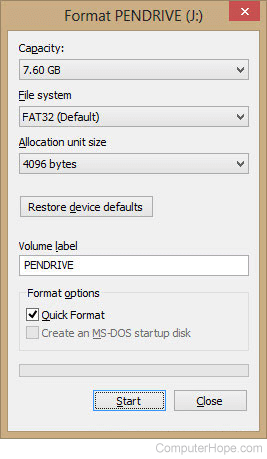What is the difference between a quick format and a full format?

There comes a time when a hard drive or other storage device needs to be erased so that it can be re-used, sold, or donated. How best to erase the data is the decision that needs to be made. There are two main options in Windows for erasing data: Quick Format and Full Format.
Format methods
A Quick Format is quick. To make the formatting process quick, the drive is not checked for bad sectors. Anyone looking at the hard drive or storage device would not see any data and assume the drive is erased. Unfortunately, the files are actually still there and the volume could be re-built, allowing access to them again.
A Full Format runs an additional step that checks the hard drive for any bad sectors. This check is what makes the full format take longer than a quick format. Unfortunately, like the quick format, the files still exist and the volume could be re-built to access data.
If you are planning to re-use the drive and it's working, a quick format is adequate since you are still the owner. If you believe the drive has problems, a full format is a good option to make sure no issues exist with the drive.
To sell or donate the drive and there is sensitive information on the drive, we highly recommend securely erase all information on the hard drive.
